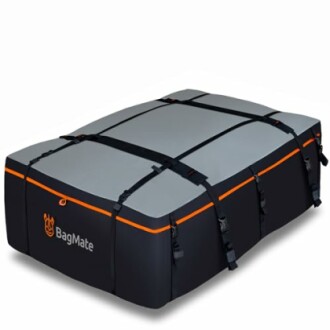
Understanding Load Distribution for Cargo Racks
Key Takeaways
- Proper load distribution in cargo racks ensures safety and prevents accidents.
- Understanding weight limits and vehicle capabilities is crucial for effective transportation.
- Different types of cargo racks have varying load distribution requirements.
- Regular maintenance and checks can enhance safety during transport.
When planning a road trip or transporting items with your vehicle, understanding load distribution for cargo racks is crucial. Improper weight distribution can lead to accidents, damage to your vehicle, and potential harm to you or others on the road. In this article, we will explore the importance of load distribution, factors to consider, and tips to ensure safe and efficient transportation.
What is Load Distribution?
Load distribution refers to how weight is distributed across a vehicle when using cargo racks. It involves ensuring that the weight is balanced to prevent swaying or loss of control while driving. Good load distribution entails the proper placement of items on your rack and ensuring that you stay within your vehicle's weight limits.
Why is Load Distribution Important?
Load distribution is vital for several reasons:
- Safety: Imbalanced loads can cause instability, leading to accidents.
- Fuel Efficiency: An unevenly loaded vehicle can increase fuel consumption.
- Vehicle Wear: Excessive or poorly distributed weight can cause damage to your vehicle's suspension.
Factors Influencing Load Distribution
Here are some key factors to consider when distributing load on cargo racks:
- Weight Capacity: Always check your vehicle's load capacity.
- Rack Design: Different racks are designed for specific weight distributions.
- Center of Gravity: Place heavier items at the bottom and towards the center of the rack.
- Secure Load: Ensure that every item is fastened properly to prevent shifting.
Types of Cargo Racks and Load Distribution
| Cargo Rack Type | Recommended Load Distribution | Notes |
|---|---|---|
| Roof Racks | Distribute weight evenly across the rack. | Use soft luggage carriers for better weight management. |
| Hitch Racks | Place heavy items closest to the vehicle. | Avoid overloading the hitch. |
| Truck Bed Racks | Keep heavier items at the front and evenly spaced. | Consider using nets or straps to secure the cargo. |
Product Recommendations
To enhance your cargo management solutions, consider the following product:
Heavy-Duty Waterproof Roof Bag
This spacious rooftop cargo carrier offers 23 cubic feet of storage, perfect for any adventure and compatible with or without racks.
Learn MoreTips for Proper Load Distribution
Beginner's Tips
- Start by distributing weight evenly—lighter items on top and heavier ones on the bottom.
- Use durable straps to secure your load and prevent shifting.
- Measure your cargo before departure to ensure it fits within load limits.
- Check your vehicle and rack for wear before loading gear.
- Regularly examine the balance of your load during travel, especially after making stops or adjustments.
Regular Maintenance and Checks
After loading your cargo, make it a habit to perform regular checks. Inspect the load before and after long drives. Ensure that the items remain secure and that the rack is functioning properly. Consider reviewing trailer hitch resources to understand how other towing accessories impact load distribution.
"A safe journey begins with a well-prepared vehicle and a balanced load."
Conclusion
Understanding load distribution for cargo racks is essential for ensuring safety, efficiency, and longevity of your vehicle. By adhering to the guidelines discussed in this article, you can avoid common pitfalls of improper load management and enjoy your outdoor adventures with confidence. For more information and products related to cargo management, don’t hesitate to explore our roof racks and boxes section.

